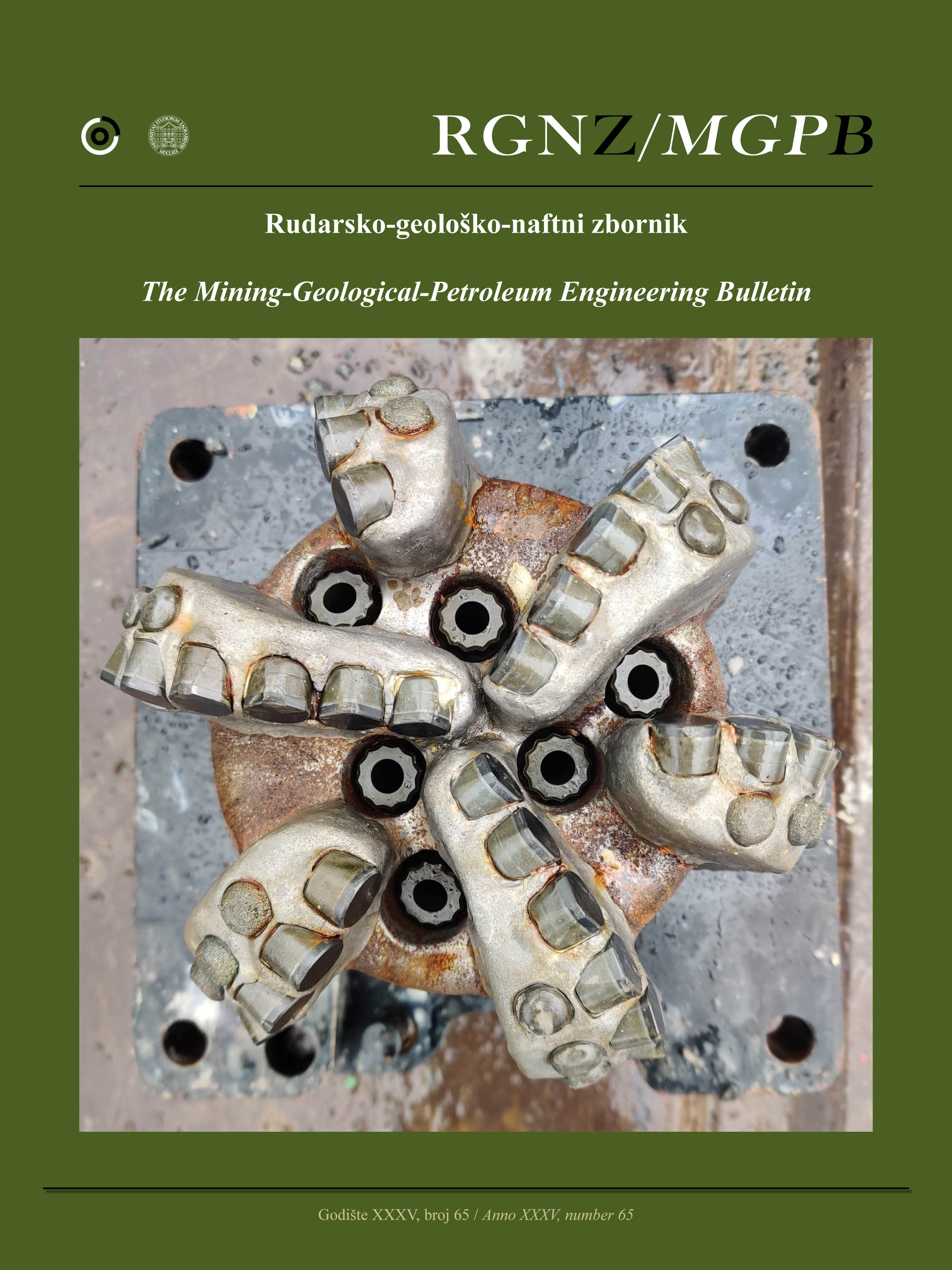Geochemistry of Potential Source Rock and Natural Gas Seepages in the Mangole-Taliabu Archipelago, North Maluku, Indonesia
DOI:
https://doi.org/10.17794/rgn.2023.4.8Keywords:
source rock, natural gas seepage, organic geochemistry, carbon isotope, mangole, taliabuAbstract
The Mangole-Taliabu Archipelago has great potential for natural gas exploration due to its many active natural gas seepages. The limited natural gas exploration activities initiated during the last three decades led to a lack of publications on source rock and natural gas geochemistry. Previous research has postulated that the potential source rocks in this area and its surroundings are the Buya and Salodik formations, and known active natural gas seepages are hypothesised to originate from humic organic matter (type-III kerogen). The research aims to review and re-discuss the geochemical characteristics of potential source rock, the origins and genetics of natural gas seepages, and the correlation between natural gas seepage and source rocks by integrating the existing data with the newly collected data. This research revealed that the potential source rock is the Bobong Formation, aside from the previously confirmed Buya Formation, while the Salodik Formation is not a potential source rock as was suggested in previous publications. The most significant research finding is the type of natural gas seepage which found not only coal-derived gas but also oil-type gas. The calculated Ro of the coal-derived gas source rock is 0.80% – 1.00% and that of oil-type gas source rock ranges between 0.50% – 1.31%. For gas–source rock correlation, the Bobong Formation appears to be the most likely source for RAG/88/012 and RAG/88/014 gas samples, while the Buya Formation is the source for Binono Seep, RA/21/33, RA/21/34, and RA/21/35 gas samples. The new research findings are hoped to have significant implications for increasing the understanding of the petroleum system and encouraging further exploration activities.
Downloads
Additional Files
Published
How to Cite
Issue
Section
License
Copyright (c) 2023 Taufik Ramli, Iwan Sukma Gumilar , Ade Yogi, Ryan Akbar Fadhilah, Rakhmat Fakhruddin, Praptisih Praptisih

This work is licensed under a Creative Commons Attribution 4.0 International License.
Creative Commons-BY
Authors who publish with this journal agree to the following terms:
In agreeing this form, you certify that:
- You read the ethical codex of the RGN zbornik available at journal web.
- You submitted work is your original work, and has not previously been published and does not include any form of plagiarism.
- You own copyright in the submitted work, and are therefore permitted to assign the licence to publish to RGN zbornik.
- Your submitted work contains no violation of any existing copyright or other third party right or any material of an obscene, libellous or otherwise unlawful nature.
- You have obtained permission for and acknowledged the source of any illustrations, diagrams or other material included in the work of which you are not the copyright owner.
- You have taken due care to ensure the accuracy of the work, and that, to the best of your knowledge, there are no false statements made within it.
- All co-authors of this submitted work are aware of, and in agreement with, the terms of this licence and that the submitted manuscript has been approved by these authors.
Publication licence
You retain copyright in your submitted work, according to journal license policy (CC-BY). By signing this form you agree that RGN zbornik may publish it under the publication licence. In summary the licence allows the following:
Anyone is free:
- To copy, distribute, display, and perform the work.
- To make derivative works.
Under the following conditions:
- The original author must always be given credit.
- The work may not be used for commercial purposes.
- If the work is altered, transformed, or built upon, the resulting work may only be distributed under a licence identical to this one.
Exceptions to the licence
In addition to publishing the work printed under the above licence, RGN zbornik will also enable the work to be visible online.
The journal editorial can change the licence rules anytime but it cannot retroactively restrict author(s) rights.


